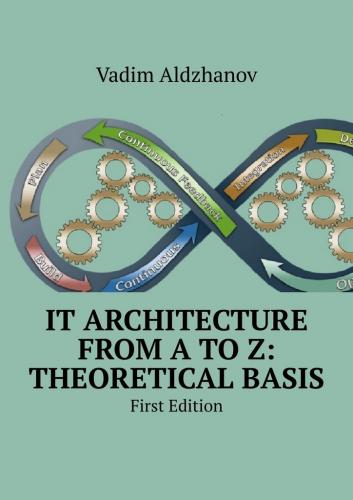• Deployment and recovery speed.
• Sub-optimal use of computing resources.
“Virtualization Platform” implies that IT services are located on the virtualization platform as virtual machines. Benefits:
• Relatively low operative expenditures of IT infrastructure.
• The platform is de facto standards for the deployment of “On-premises” solutions.
Deficiencies: Relatively high capital expenditure in IT infrastructure.
Recommendations for selection:
“Physical servers” solution is more preferable for small, isolated or remote IT services, or high volume systems. For all other cases, it is better to use a virtualization platform.
Choice strategy for data storage system
If you choose “On-premises” as deployment infrastructure, there are the following options:
• Physical servers and Direct-Attached Storage (DAS);
• Centralized Data Storage System, i.e. Network Attached Storage (NAS) and Storage Area Networks (SAN);
• Distributed Data Storage System, i.e. Digital Data Storage (DDS) and Software-Defined Storage (SDS).
Physical servers implies that the data is located on physical servers.
Benefits:
• Relatively low capital expenditure of IT services for small solutions.
• The resources of the physical server are fully allocated to the tasks of a particular service.
Deficiencies:
• The complexity of maintenance as the infrastructure grows.
• Deployment and recovery speed.
• Sub-optimal use of computing resources.
Centralized Data Storage System (NAS, SAN) implies that the data are located on a single data storage system partially or completely. DSS is a single complex consisting of controllers and disk storage racks.
Benefits: Relatively low operative expenditures of IT infrastructure.
Deficiencies: Relatively high capital expenditure of IT infrastructure.
Distributed Data Storage System (DDS, SDS)” implies that the data is distributed between different physical servers. A storage system is a complex distributed within the network and consisting of data controllers and disk storages.
Recommendations for selection:
“Physical servers” solution is more preferable for small, isolated or remote IT services, or high volume systems. For all other cases, it is better to use a virtualization platform.
Strategy of choosing the manufacturer
The strategy for choosing software and hardware determines the approach to the choice of manufacturer, standardization, and so on.
The following options can be considered:
• Use of a limited list of manufacturers;
• Use random list of manufacturers.
Using a specific manufacturer for each category of IT assets implies using hardware and software standards within the organization.
Benefits:
• Implementing IT asset standards simplifies providing an organization staff with IT assets;
• It facilitates the implementation and maintenance of IT infrastructure, and increases the level of the organization’s information security.
Deficiencies: Relatively high cost and dependence on the manufacturer/supplier.
Using a random manufacturer implies use of recommendations instead of hardware and software standards within the organization.
Benefits: Relatively low cost and promptness in procurement of IT assets.
Deficiencies:
• The process of providing an organization staff with IT assets is more sophisticated and takes longer;
• It complicates the implementation and maintenance of IT infrastructure, and
• reduces the level of the organization’s information security.
Recommendations for selection:
The first licensing option is recommended is recommended to organizations with close integration and dependence of business and Information Technology or a large number of employees.
Licensing strategy
The licensing strategy determines the approach to licensing methods. The following options can be considered:
Using an “Enterprise” license agreement with the annual software update. Licensing is an ongoing IT process.
Benefits:
• Greater flexibility of licensing.
• Maintaining the high level of IT infrastructure and information security due to using updated versions of systems and solutions.
• Systems are upgraded smoothly, with no surges in requirements of IT, human resources or time.
Deficiencies: Relatively high cost.
Purchasing commercial off-the-shell retail versions with no software update. Licensing “upon request”.
Benefits: A relatively cheaper option.
Deficiencies:
• Less freedom in licensing.
• The level of maintaining IT infrastructure and information security is reduced due to using not the most updated versions of systems and solutions.
• Systems are upgraded in jumps (every three, four years), and require additional IT resources, people, and time.
Recommendations for selection:
The first licensing option is recommended to organizations with close integration and dependence of business and Information Technologies.
The strategy of building engineering systems
“On premise” and “Hybrid” solutions demand to determine the engineering system requirements. The engineering systems requirements for may include:
• Physical requirements for the premises of the data center, server room, data cabinets etc.
• Requirements for a Structured Cabling System (SCS).
• Requirements for redundancy, reservation and so on.
Testing strategy
Testing is one of the important elements when building an IT architecture. Testing questions have to be identified at the design stage. There are the following platforms:
•“Test or Development” is a platform with individual IT services deployed which is used to develop services or adjust IT service elements.
•“Pre-production” is a smaller “Production” platform containing all the components of the IT architecture. It is used to test the interaction of IT services and allows emulating troubleshooting, estimating performance, and so on.
•“Production” is a platform with detailed computing resources providing IT services.
Recommendations for selection:
Various solutions can be implemented depending on the business requirements and the organization’s financial capacity. A detailed description is further discussed
